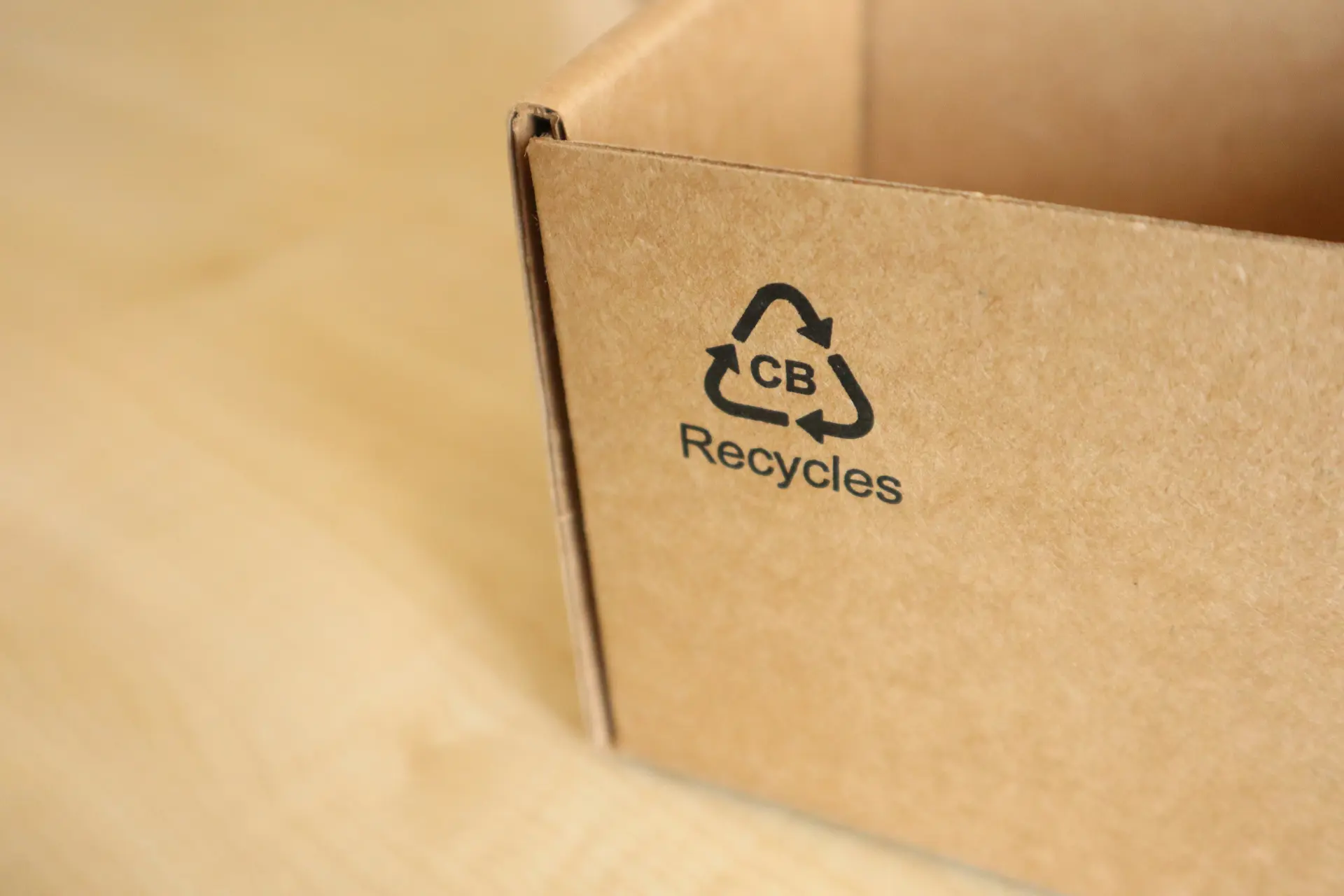Introduction to EPR and the Importance of Accurate Data
Extended Producer Responsibility (EPR) is an environmental policy approach that makes producers responsible for the entire lifecycle of their products – particularly the post-consumer stage. It shifts the cost and accountability for recycling, collection, and disposal from public authorities to the companies that manufacture, import, or sell products with packaging.
Under EPR legislation, producers are required to record, report, and sometimes finance the management of packaging waste they generate. In practical terms, this means businesses must understand exactly how much packaging they place on the market, what materials it contains, and whether those materials can be recycled or recovered.
Across Europe and the UK, EPR is being introduced or strengthened to align with circular economy objectives and sustainability frameworks. The UK’s updated EPR packaging scheme, for example, will require producers to report detailed data on every component of their packaging and pay fees based on recyclability and environmental impact. This makes packaging data management a critical operational capability rather than an administrative afterthought.
The Rising Demand for Transparency and Accountability
Consumers, governments, and investors increasingly expect brands to demonstrate measurable progress towards sustainability. It’s no longer enough to make general commitments to “go green” – stakeholders want hard data. Packaging, being one of the most visible contributors to environmental waste, has come under intense scrutiny.
Brands now face growing pressure to disclose packaging material breakdowns, carbon footprints, and end-of-life outcomes. Retailers also demand transparency from suppliers, requiring clear evidence of compliance and recyclability.
EPR schemes have become the mechanism to enforce this transparency. They compel organisations to quantify and share packaging data, tying environmental accountability directly to business operations. The ability to manage and report packaging data accurately is therefore not just about legal compliance – it’s about protecting brand reputation and maintaining trust.
The Role of Packaging Data in EPR Reporting
At the core of every EPR submission lies packaging data. Producers must declare each packaging material (plastic, paper, aluminium, glass, composite materials, etc.), including its weight, composition, and intended use. This data is then used to calculate EPR fees and recycling obligations.
For instance, if your company sells drinks in plastic bottles with aluminium caps and paper labels, each material must be reported separately. The total weight and market placement volumes determine the fees you’ll owe to producer responsibility organisations or regulators.
Without structured, reliable data, companies risk inaccuracies that could lead to fines, investigations, or reputational damage. Comprehensive packaging data management ensures these risks are mitigated – and that businesses can respond confidently to audits, policy changes, and customer requests.
The Link Between Packaging Data and EPR Compliance
Why Data Accuracy Matters for Compliance
Accurate packaging data underpins every stage of EPR compliance. Reporting errors – even small ones – can lead to underpayment, overpayment, or misreporting of packaging materials. In an era of strict enforcement and data validation by authorities, such mistakes are costly.
For example, if a company misclassifies composite packaging or miscalculates the weight of plastic components, it might underreport its liability. This not only attracts fines but can also trigger retrospective audits requiring re-submissions and justifications. On the other hand, overreporting leads to unnecessary fee payments, draining budgets.
Accurate data enables producers to meet submission deadlines confidently, generate region-specific reports, and demonstrate compliance without panic or last-minute manual adjustments.
The Cost of Poor Data Management
Poor data management doesn’t just risk non-compliance – it creates operational inefficiencies that ripple across the business. Compliance teams spend excessive time reconciling spreadsheets from different departments or chasing missing information from suppliers.
Manual consolidation often introduces duplicate entries or missing figures, delaying submissions and creating stress. The financial cost of these inefficiencies can be significant. According to industry research, manual data handling can consume up to 60% more administrative time compared to automated systems.
Worse still, errors can result in fines or legal consequences. Regulatory authorities are increasingly auditing submissions, requiring producers to justify their figures with traceable records. Without reliable systems, businesses can’t provide the necessary evidence.
How EPR Schemes Depend on Reliable Packaging Information
EPR obligations vary across regions, but they all depend on accurate packaging data. Fees and targets are typically calculated based on packaging type, recyclability, and tonnage. For example:
- Plastic may incur higher fees than paper or aluminium due to lower recyclability rates.
- Composite materials may require special categorisation or additional reporting.
- Exported packaging may be exempt but must still be tracked and reported accurately.
Reliable packaging information allows producers to interpret and fulfil these obligations correctly. It also provides a foundation for future compliance expansions, such as Digital Product Passports and lifecycle analysis reporting.
Key Challenges in Managing Packaging Data for EPR
Fragmented Data Sources and Siloed Systems
In many organisations, packaging data is spread across design teams, procurement systems, marketing databases, and supplier spreadsheets. Each department tracks data differently, leading to inconsistencies.
When EPR reporting time arrives, compliance managers must gather information from numerous disconnected sources. The process is manual, slow, and prone to duplication or version conflicts. A centralised system solves this by consolidating data into a single platform – one that provides clarity, traceability, and accuracy.
Lack of Standardisation Across Markets
EPR is not a single, harmonised global standard. Each country – and sometimes each region – defines its own reporting rules, packaging classifications, and submission deadlines.
For multinational brands, this creates a compliance maze. Data collected for France’s scheme might not align with what’s required in Germany or the UK. Without standardised data structures, teams must manually reformat and reinterpret information for each market, wasting valuable time.
Complex Supply Chains and Multi-Material Packaging
Packaging rarely comes from a single source. Components are often supplied by different vendors across various regions. Each supplier might provide data in different formats – kilograms, percentages, or descriptive text.
Multi-material packaging adds another layer of complexity. A single product could include recyclable and non-recyclable materials, each of which must be itemised and reported separately. Tracking this information manually across multiple SKUs is unsustainable without a structured system.
Manual Processes and Human Error
Manual entry is a common pain point in EPR data management. Teams often use spreadsheets or email exchanges to collect packaging information, leading to transcription errors and inconsistencies.
As data volumes grow, the likelihood of error increases exponentially. Human oversight may miss small discrepancies that can snowball into compliance failures. Automated validation and structured workflows drastically reduce these risks.
What Good EPR Packaging Data Management Looks Like
- Centralised Data Repositories: The cornerstone of effective EPR packaging data management is a centralised, cloud-based repository. All packaging data — specifications, weights, materials, and recyclability status — should be stored in a single location, accessible to relevant teams and suppliers. Centralisation ensures a “single source of truth,” meaning everyone works from the same verified data. This eliminates duplication, ensures version control, and allows teams to collaborate in real time.
- Standardised Data Structures and Reporting Templates: Standardisation is critical for scalability. By defining uniform data fields (such as packaging material, weight, and supplier source), businesses can ensure consistency across all products and markets. When data is structured properly, generating EPR reports becomes straightforward. Compliance managers can export country-specific reports automatically, formatted to match local requirements. This saves hours of manual work and reduces the risk of formatting errors.
- Traceability and Audit Readiness: Regulators increasingly demand transparency in how EPR data is collected and managed. A good system must record every change — who made it, when, and why. Version-controlled data provides a clear audit trail, demonstrating compliance integrity. Traceability also helps internally. If a supplier updates a packaging material or a weight value changes, teams can review historical data instantly, ensuring accountability and accuracy.
- Automation and Real-Time Updates: Automation is the key to efficiency. Systems that automatically capture supplier data, validate inputs, and flag anomalies in real time dramatically reduce manual effort. Real-time updates mean compliance teams always work with the latest data. If packaging specifications change or new products are launched, those updates feed directly into the reporting system — keeping compliance seamless and continuous.
The Business Benefits of Strong Packaging Data Management
1. Streamlined EPR Reporting and Reduced Admin Burden
With structured and automated data, EPR reporting transforms from a stressful annual scramble into a routine process. Reports can be generated on demand, confident in their accuracy. Compliance teams no longer need to chase departments or suppliers for missing figures — everything they need is already in the system.
2. Cost Savings and Efficiency Gains
Efficient data management reduces overpayments by ensuring fees are based on correct material volumes. It also minimises time wasted on manual data handling, freeing staff to focus on strategic sustainability initiatives.
Companies that adopt centralised systems often see significant ROI, as improved data quality translates directly into reduced fees, fewer errors, and smoother audits.
3. Improved Sustainability Performance
Beyond compliance, packaging data management drives environmental improvement. When businesses have clear visibility of their packaging materials, they can identify opportunities to reduce non-recyclable components, switch to lighter materials, or increase post-consumer recycled content.
This data-driven insight supports eco-design decisions, helping brands meet both regulatory and voluntary sustainability targets.
4. Enhanced Collaboration Across Teams and Partners
Good data management breaks down silos. Designers, compliance officers, and procurement managers can access and update information collaboratively. Suppliers can contribute verified data directly, improving quality and accountability across the value chain.
How 4Pack Supports EPR Packaging Data Management
The 4Pack Platform Overview
4Pack is a cloud-based platform built to centralise, manage, and automate product and packaging data. Designed specifically for the packaging and FMCG industries, 4Pack eliminates the complexity of managing packaging specifications, artwork, and EPR compliance data in disconnected systems.
The platform acts as a single hub for everything related to packaging data – ensuring accuracy, consistency, and full traceability across teams and markets.
Key Features That Enable EPR Compliance
- Integrated Data Repositories: Consolidate all packaging data in one place for global access.
- Customisable Templates: Align data structures with country-specific EPR requirements and automatically generate compliant reports.
- Automated Data Collection and Validation: Import supplier data and automatically check for completeness, accuracy, and conformity.
- Audit Trails and Version Control: Track every modification to maintain transparency and confidence during audits.
- EPR Reporting Dashboards: Visualise compliance performance and generate reports at the click of a button.
Real-World Impact: Streamlining Compliance Workflows
Imagine a multinational food brand selling products across Europe. Each market – the UK, Germany, France – has unique EPR rules, material classifications, and deadlines. Before 4Pack, the brand relied on spreadsheets and manual consolidation, consuming weeks of staff time every quarter.
After implementing 4Pack, all packaging data was centralised, standardised, and automated. Reports were generated instantly for each country, errors were reduced by over 80%, and compliance staff could focus on strategic sustainability projects instead of data wrangling.
Why Leading Brands Choose 4Pack
4Pack is trusted by leading global brands for its reliability, scalability, and user-friendly interface. It grows with your business, supporting new product launches, expanding markets, and evolving regulations. Backed by expert support, 4Pack ensures your organisation remains compliant, efficient, and audit-ready at all times.
Getting Ready for the Future of EPR Compliance
Evolving Legislation and Data Demands
EPR regulations are not static – they’re becoming more detailed and data-driven each year. Future developments such as Digital Product Passports (DPPs) will require even greater transparency, including recyclability scores and material provenance. Businesses that already have structured data systems will adapt easily to these new obligations.
Building a Data-Driven Compliance Culture
Sustainable compliance isn’t a one-off task – it’s a cultural shift. Businesses that embed data accuracy and transparency into daily operations are best positioned for success. By fostering collaboration between packaging, procurement, and compliance teams, companies create a proactive compliance culture rather than a reactive one.
Preparing Your Organisation with the Right Tools
Technology is essential to maintaining compliance efficiency. Platforms like 4Pack provide automation, visibility, and control – ensuring your organisation stays ahead of legislation and competitive pressures. The right tools don’t just help you comply; they help you lead in sustainability.
Summary
EPR compliance is redefining how companies handle packaging data. Accurate, centralised, and traceable data isn’t just a compliance requirement – it’s a strategic asset. It reduces costs, increases efficiency, and enhances sustainability outcomes.
Businesses that neglect data management risk falling behind. Those that embrace systems like 4Pack gain control, confidence, and credibility in a rapidly evolving regulatory landscape.
Book a Demo with 4Pack
Ready to simplify your EPR compliance process and take control of your packaging data?
Book a demo with 4Pack today to discover how our solution can centralise your data, automate reporting, and ensure full compliance across every market.



